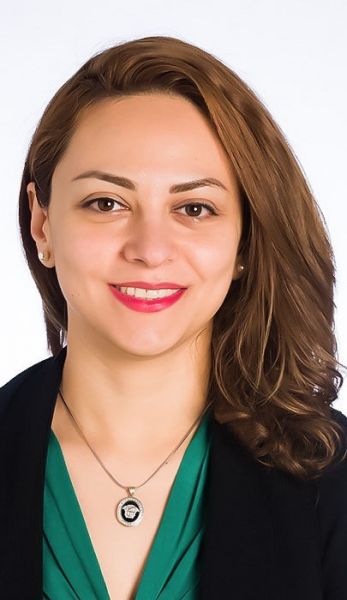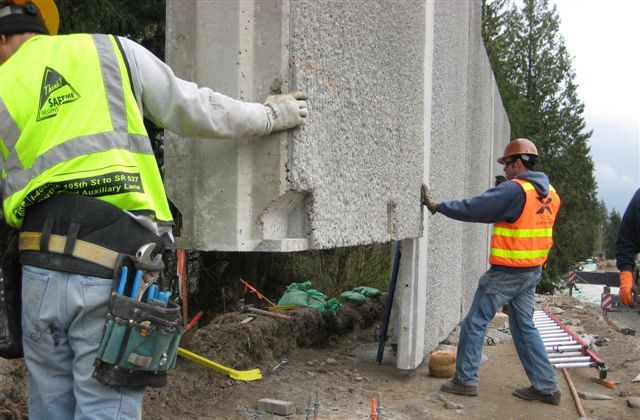Congrats to Dr Ailar Hajimohammadi for innovative ARC linkage project
 Dr Ailar Hajimohammadi has received $210,000 ARC funding for a project that will develop high-performance lightweight concrete noise walls and acoustic barriers that use recycled tyre and glass products. These products will improve sound absorption, and address environmental problems associated with the mining of river sands and stockpiling of waste tyre and glass products.
Dr Ailar Hajimohammadi has received $210,000 ARC funding for a project that will develop high-performance lightweight concrete noise walls and acoustic barriers that use recycled tyre and glass products. These products will improve sound absorption, and address environmental problems associated with the mining of river sands and stockpiling of waste tyre and glass products.
Almost 20% of the Australian population are exposed to high levels of traffic noise that are well above those recommended by the World Health Organisation. This can result in various problems such as sleep disturbance, hearing impairment, high blood pressure and cardiovascular complications. Overall, occupational noise exposure levels in Australia cost us $2.68 billion per annum due to impacts on health and well-being and productivity loss.
To reduce the noise level to below a safe threshold, noise barriers are often used, as acoustic walls, wall linings and acoustic fences in buildings and workplaces, and as noise walls in roads. The most common noise barrier is conventional concrete as, through its hardened, low-porous, surface, it reflects noise back to its source. However, concrete is a poor sound absorber. Sound waves are simply reflected back to the source and beyond when they strike concrete, and they are barely reduced in magnitude.
One of the popular solutions in Australia to enhance noise absorption is the use of autoclaved aerated concrete (AAC). However, this type of porous concrete consumes more cement than traditional concrete, and the autoclave process requires steam-fed high-pressure chambers to reach temperatures of around 200°C at about 800 kPa pressure. Therefore, considering that cement production is responsible for about 5% of global CO2 emissions, the manufacturing process of aerated concrete is expensive, further increases the carbon footprint of AACs, and is not environmentally sustainable.
“It is essential” says Dr Hajimohammadi, “to adopt a concrete material technology that is cost-effective, sustainable and can effectively attenuate noise.”
To have high-performance, cost-effective, and sustainable noise walls, Dr Hajimohammadi’s project will develop concrete mix designs made with waste glass (WG) and end-of-life tyres (EOLT) and will address several challenges for the large-scale adoption of waste-derived concrete noise barriers.
Dr Hajimohammadi will lead the UNSW research on the project along with Professor Stephen Foster, A/Professor Hamid Valipour from CIES and Dr Danielle Moreau from UNSW Mechanical and Manufacturing Engineering. CIES researchers will investigate the mechanical and durability performance of the developed noise barriers, and Dr Moreau will investigate their acoustic performance.
 Her project has broad implications for industry in practice and future productivity, as it deals directly with one of the most practical challenges faced by the concrete industry in Australia and globally, i.e., developing value-added construction products from problematic wastes and improving infrastructure sustainability, without compromising quality and performance.
Her project has broad implications for industry in practice and future productivity, as it deals directly with one of the most practical challenges faced by the concrete industry in Australia and globally, i.e., developing value-added construction products from problematic wastes and improving infrastructure sustainability, without compromising quality and performance.
Dr Hajimohammadi has extensive expertise in investigating waste management and resource recovering strategies, working towards a circular economy in civil and construction projects. She has participated in several awarded projectsutilising waste materials to make sustainable construction materials, including a recent EPA grant to explore potential of WG in novel concrete pavements.
Waste not want not.
In 2018-19, about 1.2 Mt of WG was generated in Australia, from which only 58% was recycled. The annual figure for end-of-life waste tyres is around 465,000 tonnes, of which 45% are processed locally, disposed of onsite or sent to landfill, and the rest exported.
Waste disposal has become an increasingly pressing problem worldwide since China, previously its main destination, prohibited imports of almost all foreign waste. Australia exported 4.4 million tonnes of waste-derived materials in 2018-19, and around 10 per cent of the total waste export was recyclable glass and tyres.
The new export ban on Australian recyclable waste materials has imposed challenges on the waste management sector. The export of WG has been banned since January 2021, and whole tyres since December 2021. Every year in Australia, about 50 million tyres reach the end of life. Stockpiling EOLTs has become significant concern and apart from its landfill costs, has resulted in several recent major fires.
On the other hand, while mining continues to deplete our natural resources, a growing mountain of WG threatens to inundate our cities with landfill. The construction industry is one of the largest markets for the uptake of glass and tyre wastes, and the manufacturers of construction elements are keen to develop innovative products to expand their market and create value for their customers.
Noise attenuation in engineering infrastructure projects is mandated by Government authorities, providing a significant additional motivation for infrastructure designers and constructors to incorporate recycled materials and improve the sustainability rating of their products.
“This project will fill existing knowledge gaps” says Hajimohammadi, “and will develop sustainable and cost-effective noise barriers, in an innovative solution that promotes the development of viable markets for WG and EOLT.”
Outcomes
 “This is a project with so many great direct and indirect expected outcomes,” Dr Hajimohammadi says.
“This is a project with so many great direct and indirect expected outcomes,” Dr Hajimohammadi says.
Research outcomes will lead to a new construction method, supported by thorough experimental and numerical analysis in the design of novel concrete noise barriers.
Increased acoustic, mechanical, and durability performance due to the implementation of the proposed method will considerably increase the competitiveness of the Australian construction industry.
It also provides considerable benefits to the construction industry and infrastructure asset owners by reducing costs, CO2emissions and energy consumption.
The project will also support the development of new products for Australian and international markets, and in the export of technology to a global market, putting Australian precast concrete manufacturing in a leading position on innovative applications for EOLT and WG, and creating new industry jobs.



